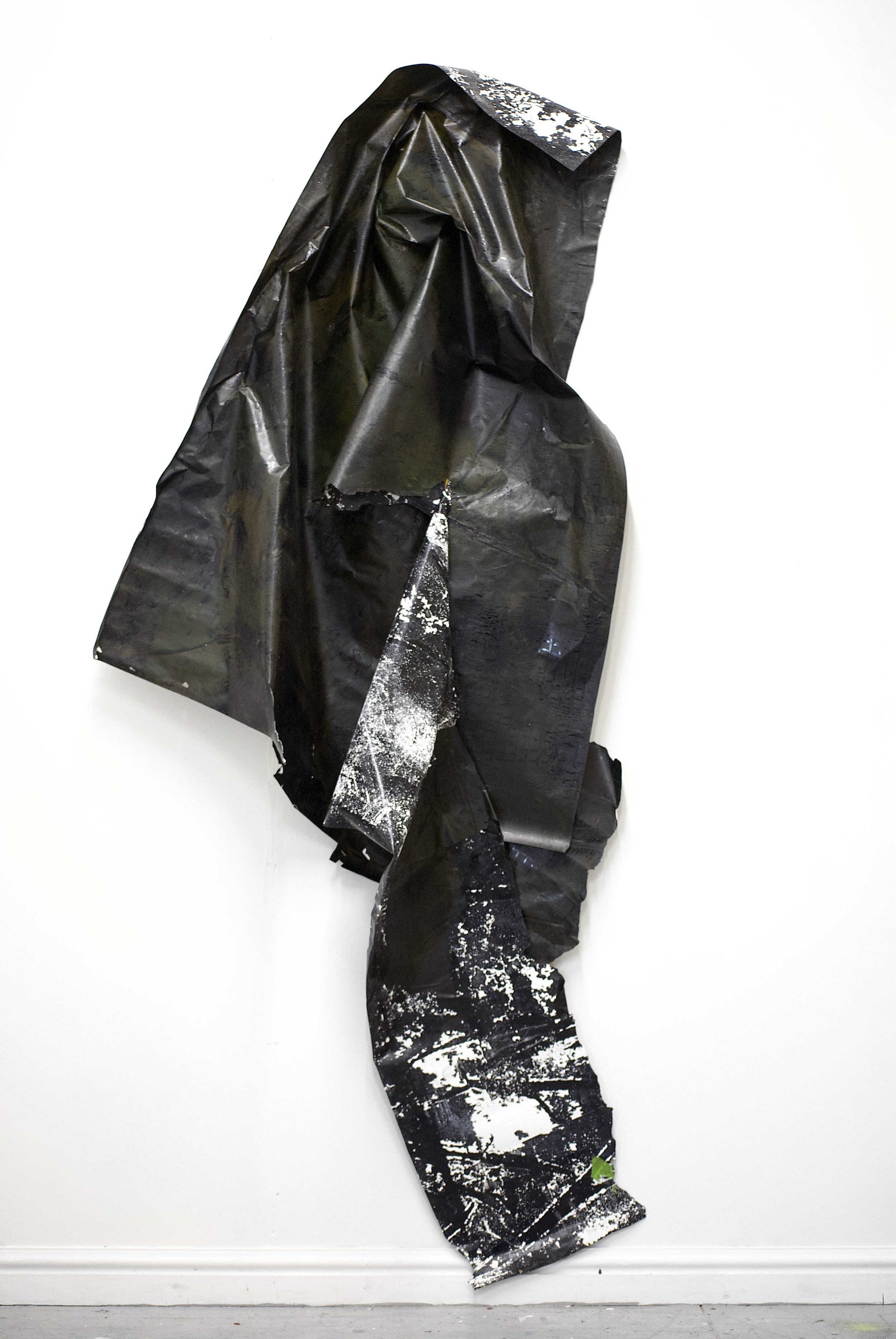Since October 2023 I have been making a body of work titled skin. This series sees me using car wrap, oil paint and various tools to explore visually my navigations of touch after sexual assault.
For a long time, I thought I might conceal the personal root of these works referencing trauma but not being explicit about the origin.
But as I spoke about the skin series socially, I found that, unprompted - people were immediate in sharing with me their own histories of sexual assault and abuse.
These conversations aided me to realise that the work needed transparency, and that I wanted transparency within it.
The moment of focus within these works is sometimes within the assault itself, but more commonly within the aftermath.
After sexual assault I found touch, intimate or otherwise, difficult
Not all of the time, but the signalling of touch could abruptly change, my body stating
you are in danger
a soft stroke could turn caustic
a warm palm suddenly sandpaper
a lover’s kiss, an alien touch
When I began skin, I wrote to touch but not caress, some prose about how the kinds of touch I wanted to depict lived in a sphere separate from softness.
I discussed how I could use painting techniques such as scumbling, scraping, dry brush and so on but found the issue with such techniques was the ease at which paint is applied when using a tool as intended.
This was when I introduced abrasive tools to apply paint and excavate the surface these included scrapers, sandpaper, steel brushes and steel wool.
Within these tools I found a visual language that communicates the
muddied, jolted and varied landscapes of touch after sexual assault.
skin three, 2024, oil on car wrap, 250 x 150 cm
skin four, 2024, oil on car wrap, 150 x 150 cm
The use of car wrap is directly tied to concepts of consumption, identity and desire. The wrap’s synthetic sheen references the car as a modernist object of desire, calling attention to the impermanence and superficiality of the material. Car wraps typically last five years before replacement, at which point the car owners will often radically change the look.
In part, I am excited at the idea of visual identity expressed through these ever-changing wraps. Standing as metaphors for my interchangeable moods and my expanding want for multiplicity.
But the other part of me is disappointed, scared? When will it be enough, a clawing and craving for change, one identity tossed out for another. Doesn’t this shedding also exemplify exactly what I fear, bodies no longer bodies, skins no longer skins. If he did it to me, he’s done it before, he’ll do it again, and again.
Desperate to sit in myself, I return to the studio and quiet. I contemplate on light and the character of darkness in these paintings. I’ve been talking to my students about Caravaggio and chiaroscuro and that there’s the figures, and the story, and then there’s the character of the dark. Often taking up the majority of his compositions, the paintings are as much what is hidden as what is present. I wonder if that is the same here - holographic and brushed metal car wraps hidden by paint and scrapes.
Skin eleven on the studio wall, gunge green-grey slathering the surface. On a five-point value scale, it all exists at between four and five. Murky, muddy, and barely there. The wrap’s dark creases compete with the dark of my indigo gestures, initially unclear which is which.
skin six, 2024, oil on car wrap, timber, 160 x 150 cm
skin one, 2023, oil on car wrap, timber, 160 x 150 cm








